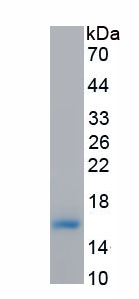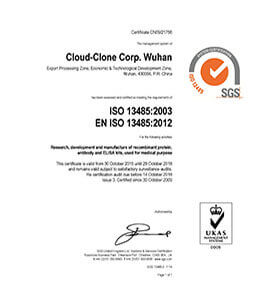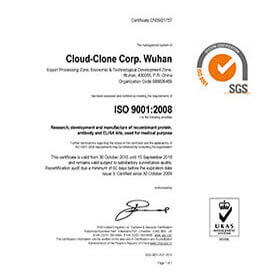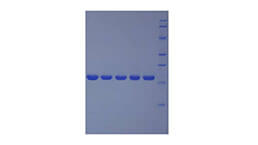Active Fatty Acid Binding Protein 5 (FABP5)
E-FABP; EFABP; PA-FABP; PAFABP; Fatty Acid Binding Protein 5, Epidermal; Psoriasis-Associated; Epidermal-type fatty acid-binding protein; Psoriasis-associated fatty acid-binding protein homolog
- Product No.APB985Mu01
- Organism SpeciesMus musculus (Mouse) Same name, Different species.
- Buffer FormulationPBS, pH7.4, containing 0.01% SKL, 5% Trehalose.
- Traits Freeze-dried powder
- Purity> 95%
- Isoelectric Point6.7
- ApplicationsCell culture; Activity Assays.
- DownloadInstruction Manual
- UOM 10µg50µg 200µg 1mg 5mg
- FOB
US$ 256
US$ 640
US$ 1280
US$ 3840
US$ 9600
For more details, please contact local distributors!
ACTIVITY TEST
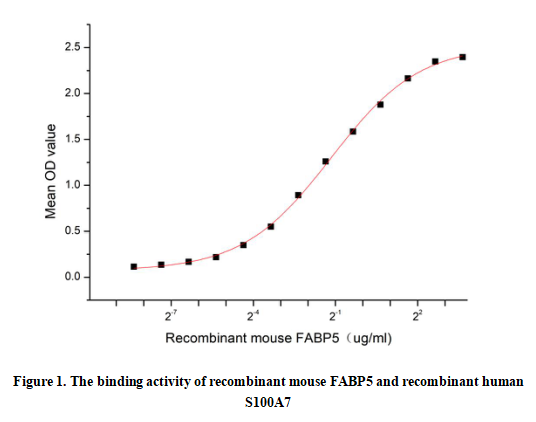
Fatty Acid Binding Protein 5 (FABP5) , is a 15-kDa cytosolic protein abundant in epidermal keratinocytes, macrophages, and adipocytes. As a member of the FABP family, it selectively binds long-chain fatty acids and retinoids, shuttling ligands to nuclear receptors to regulate gene transcription. In the skin, FABP5 drives epidermal differentiation and inflammation by modulating lipid mediator biosynthesis . It also acts as a redox sensor, protecting against oxidative stress in psoriasis and wound healing. Furthermore, the interaction between FABP5 and S100A7 augments pro-inflammatory signaling and cancer cell migration by orchestrating lipid-mediated pathways and inflammatory cytokine production.Thus a functional ELISA assay was conducted to detect the interaction of recombinant mouse FABP5 and recombinant human S100A7. Briefly,FABP5 was diluted serially in PBS with 0.01% BSA (pH 7.4). Duplicate samples of 100 μl were then transferred to S100A7-coated microtiter wells and incubated for 1h at 37℃. Wells were washed with PBST and incubated for 1h with anti-LOX pAb, then aspirated and washed 3 times. After incubation with HRP labelled secondary antibody for 1h at 37℃, wells were aspirated and washed 5 times. With the addition of substrate solution, wells were incubated 15-25 minutes at 37℃. Finally, add 50 µL stop solution to the wells and read at 450/630nm immediately. The binding activity of recombinant mouse FABP5 and recombinant human S100A7 was shown in Figure 1, the EC50 for this effect is 0.447ug/mL.
USAGE
Reconstitute in 10mM PBS (pH7.4) to a concentration of 0.1-1.0 mg/mL. Do not vortex.
STORAGE
Avoid repeated freeze/thaw cycles. Store at 2-8°C for one month. Aliquot and store at -80°C for 12 months.
STABILITY
The thermal stability is described by the loss rate. The loss rate was determined by accelerated thermal degradation test, that is, incubate the protein at 37°C for 48h, and no obvious degradation and precipitation were observed. The loss rate is less than 5% within the expiration date under appropriate storage condition.
GIVEAWAYS
INCREMENT SERVICES
-
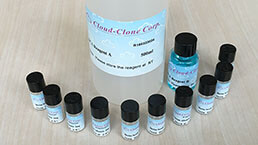 BCA Protein Quantification Kit
BCA Protein Quantification Kit
-
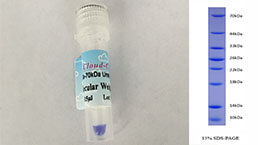 Molecular Mass Marker for Protein
Molecular Mass Marker for Protein
-
 Monoclonal Antibody Customized Service
Monoclonal Antibody Customized Service
-
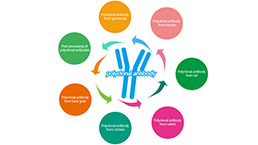 Polyclonal Antibody Customized Service
Polyclonal Antibody Customized Service
-
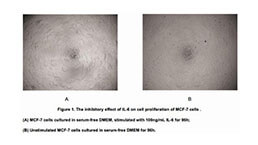 Protein Activity Test Experiment Service
Protein Activity Test Experiment Service
-
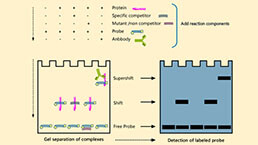 Electrophoretic Mobility Shift Assay (EMSA) Experiment Service
Electrophoretic Mobility Shift Assay (EMSA) Experiment Service
-
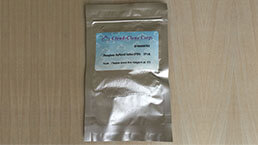 Buffer
Buffer
-
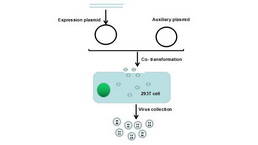 Lentivirus Packaging Experiment Service
Lentivirus Packaging Experiment Service
-
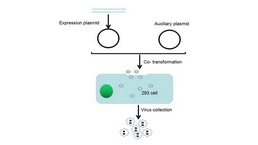 Adenovirus Packaging Experiment Service
Adenovirus Packaging Experiment Service
-
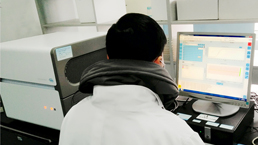 Real Time PCR Experimental Service
Real Time PCR Experimental Service
-
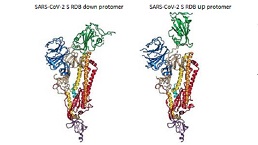 Spike RBD Protein (S-RBD)
Spike RBD Protein (S-RBD)
-
 Protein G
Protein G
-
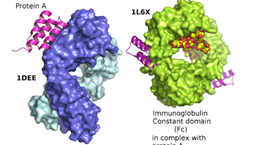 Protein A
Protein A
| Magazine | Citations |
| Journal of Proteome Research | Profiling Protein Markers Associated with Lymph Node Metastasis in Prostate Cancer by DIGE-based Proteomics Analysis PubMed: 19894759 |
| PLoS One | Circulating Levels of Fatty Acid-Binding Protein Family and Metabolic Phenotype in the General Population Pubmed: 24278421 |
| PLOS ONE | Transcriptome and Metabolome Analyses in Exogenous FABP4- and FABP5-Treated Adipose-Derived Stem Cells. pubmed:27936164 |
| Sci Rep. | Serum FABP5 concentration is a potential biomarker for residual risk of atherosclerosis in relation to cholesterol efflux from macrophages. pubmed:28303004 |


